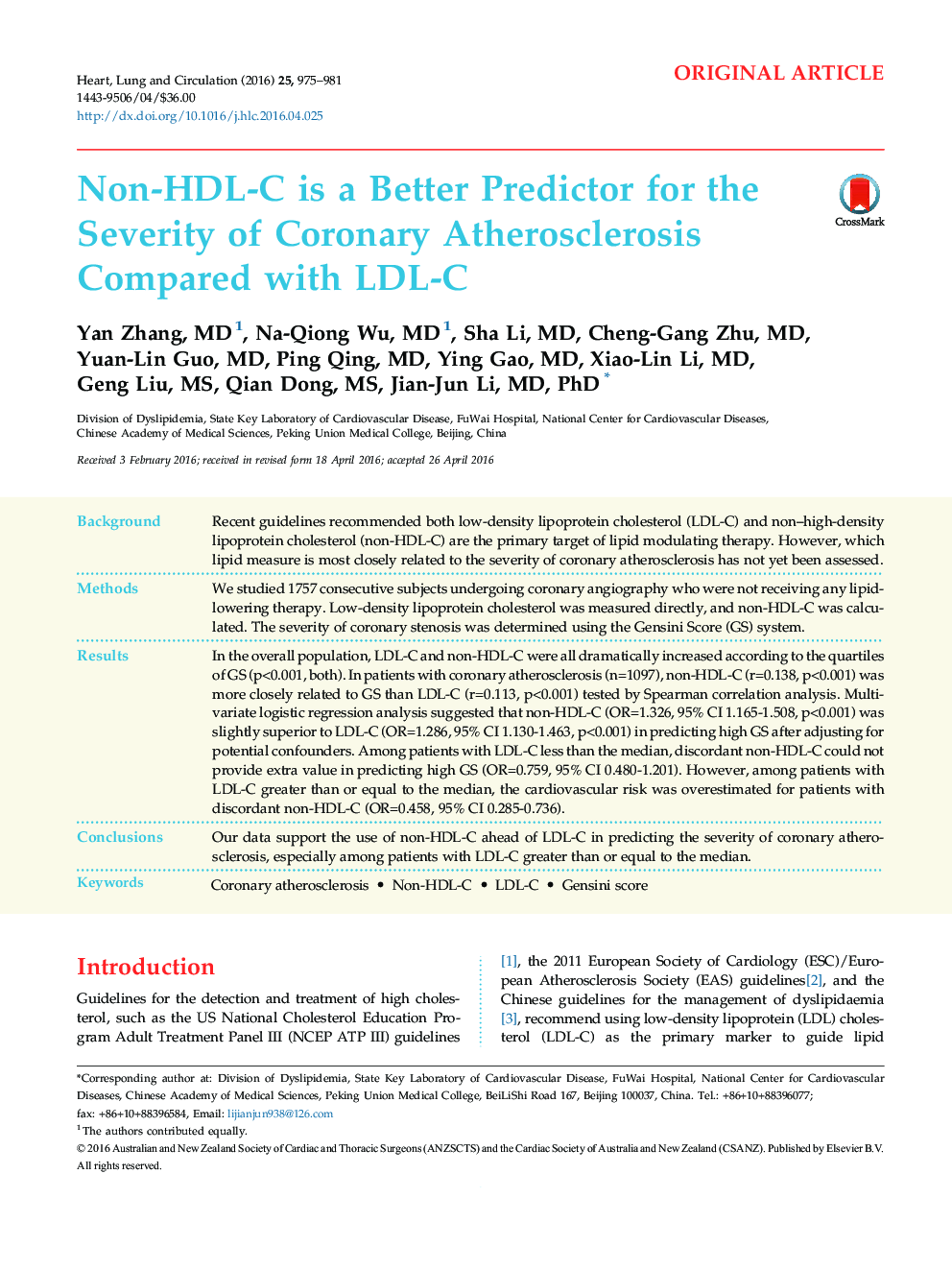| Article ID | Journal | Published Year | Pages | File Type |
|---|---|---|---|---|
| 2916569 | Heart, Lung and Circulation | 2016 | 7 Pages |
BackgroundRecent guidelines recommended both low-density lipoprotein cholesterol (LDL-C) and non–high-density lipoprotein cholesterol (non-HDL-C) are the primary target of lipid modulating therapy. However, which lipid measure is most closely related to the severity of coronary atherosclerosis has not yet been assessed.MethodsWe studied 1757 consecutive subjects undergoing coronary angiography who were not receiving any lipid-lowering therapy. Low-density lipoprotein cholesterol was measured directly, and non-HDL-C was calculated. The severity of coronary stenosis was determined using the Gensini Score (GS) system.ResultsIn the overall population, LDL-C and non-HDL-C were all dramatically increased according to the quartiles of GS (p<0.001, both). In patients with coronary atherosclerosis (n=1097), non-HDL-C (r=0.138, p<0.001) was more closely related to GS than LDL-C (r=0.113, p<0.001) tested by Spearman correlation analysis. Multivariate logistic regression analysis suggested that non-HDL-C (OR=1.326, 95% CI 1.165-1.508, p<0.001) was slightly superior to LDL-C (OR=1.286, 95% CI 1.130-1.463, p<0.001) in predicting high GS after adjusting for potential confounders. Among patients with LDL-C less than the median, discordant non-HDL-C could not provide extra value in predicting high GS (OR=0.759, 95% CI 0.480-1.201). However, among patients with LDL-C greater than or equal to the median, the cardiovascular risk was overestimated for patients with discordant non-HDL-C (OR=0.458, 95% CI 0.285-0.736).ConclusionsOur data support the use of non-HDL-C ahead of LDL-C in predicting the severity of coronary atherosclerosis, especially among patients with LDL-C greater than or equal to the median.
